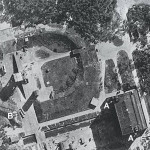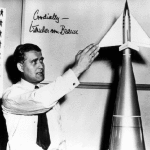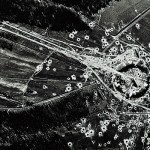SciTech Tuesday: Alsos Mission and Operation Paperclip
Seventy one years ago, as the Allies advanced towards Berlin, the Cold War between the Soviet Union and the U.S. began. Experts from the U.S. scoured seized records and interrogated captured scientists beginning in the autumn of 1944. As the Soviets advanced from the east, their military did the same.
As far back as the Alsos Mission, which corresponded to the Allied invasion of Italy, the U.S. systematically captured documents and personnel involved in Axis technology. Physicists captured included Otto Hahn (co-discoverer of fission) and Werner Heisenberg. Kurt Blome, who developed biological weapons for the Nazis and tested Sarin and other agents on prisoners was acquitted at Nuremberg because of the assistance he gave the Allies. Eugen Haagen, who experimented with contagious diseases on prisoners was not treated quite as lightly but was also spared the gallows.
As the Germans began to lose the war on the eastern front, the Nazis recalled many scientists and engineers serving ordinary duties and set them to finding technological breakthroughs that might quickly turn the tide of the war. A list assembled by the head of the Military Research Association, Wernher Osenberg, was found by U.S. intelligence stuffed in a toilet at recently captured Bonn University in 1945. This list was used to target scientists for capture and interrogation. Wernher von Braun was at the head of the list. He had led development of rockets, based on the Baltic coast at Peenemunde. There he used slave labor to build the facility and the rockets, and thousands of prisoners died in the development and deployment of the V-1 and V-2 rockets.
In the end more than 1,500 Germans with scientific and technical expertise were brought to the U.S. for employment after the war. Many of them were housed at captured European resorts before being removed with their families across the Atlantic. President Truman’s order to approve of what came to be known as Operation Paperclip came in August of 1945. This order excluded anyone who was a member of the Nazi party and any more than a nominal supporter of its activities. This would have excluded nearly all the scientists and engineers on the intelligence recruitment lists, many of whom were earlier classified as threats to security of the Allied forces.
Wernher von Braun and many others (more than 100) with expertise in rocket science were brought to Fort Bliss in Texas. Von Braun was allowed to return to Germany in 1947 (when he was 46 years old) in order to meet, and marry, his 18 year old cousin, Maria. He eventually became an Evangelical Christian, complained about his research budget, and became a U.S. citizen in 1955.
- Peenemunde, where the Germans developed and deployed long-range rockets on the Baltic coast. From Wikimedia Commons
- von Braun giving a talk about space exploration at Disney studios. From NASA.
- Peenemunde, where the Germans developed and deployed long-range rockets on the Baltic coast, after severe bombing. From Wikimedia Commons.
Posted by Rob Wallace, STEM Education Coordinator at The National WWII Museum.







Leave a Reply